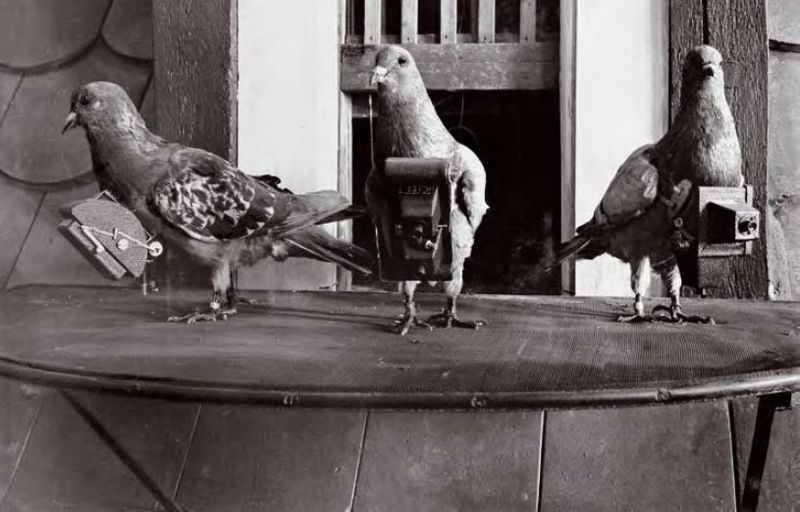Eight years before the British were to develop the first aerial drones during WW1, Dr Julius Neubronner - personal pharmacist to the Empress of Germany (daughter of Queen Victoria) — was performing aerial reconnaissance via the medium of pigeon. In 1908 Neubronner patented his "Method of and Means for Taking Photographs of Landscapes from Above", a lightweight miniature camera which could be strapped to a pigeon and activated by a timing mechanism. The invention brought him international notability after he presented it at international expositions in Dresden, Frankfurt and Paris in 1909–1911. Spectators could watch the arrival of the camera-equipped carrier pigeons, and the photos were immediately developed and turned into postcards which could be purchased. The invention gained brief interest from the Prussian War ministry but, with the rapid perfection of aviation that came with the onset of WWI, military interest in pigeon photography faded and the experiments were abandoned.
Section via Wikimedia Commons
[portfolio_slideshow]
